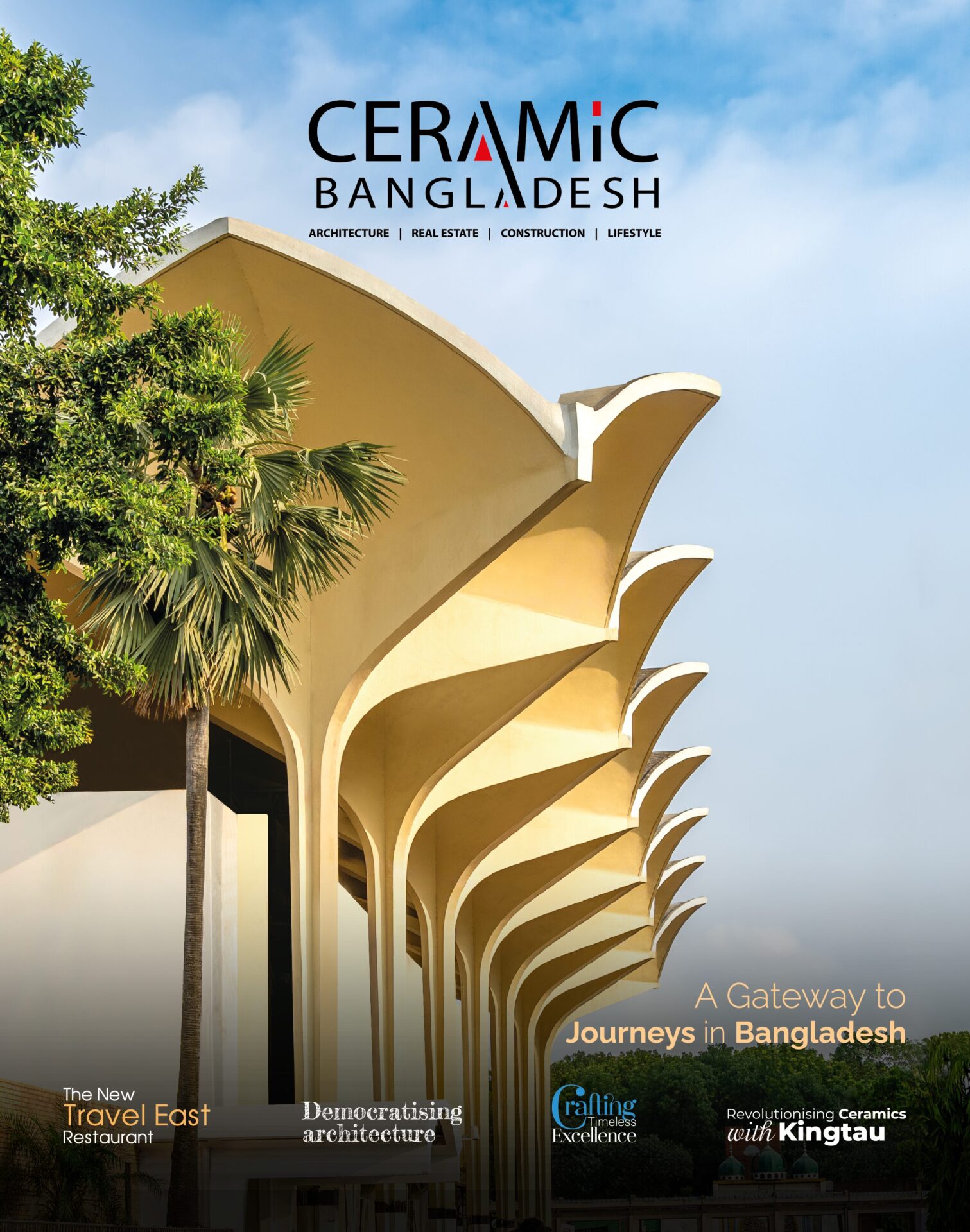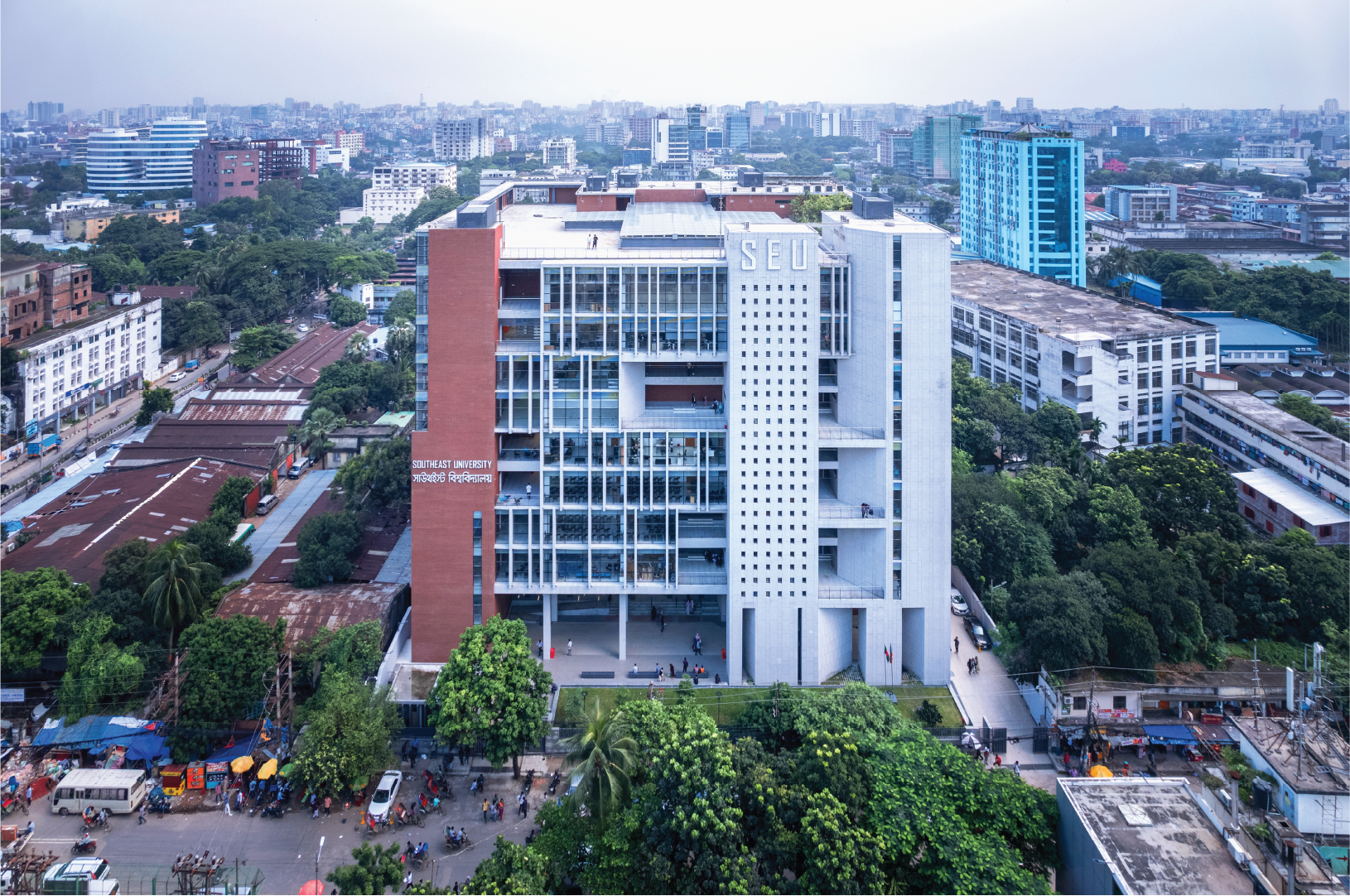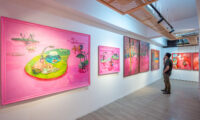

Kamalapur Railway Station, officially known as Dhaka Central Railway Station, stands as a bustling gateway to the vibrant capital city of Dhaka. Nestled in the heart of the city, this vital transportation hub connects travellers to all major cities in Bangladesh. As the largest and busiest railway station in the country, Kamalapur serves as a crucial link, facilitating journeys both near and far. Its rich history, architectural significance, and constant activity make it an iconic landmark. With a unique design and historical roots, Kamalapur Railway Station weaves together the fabric of Bangladesh’s rail network. The station’s significance has increased following the opening of the Padma Bridge. Kamalapur Railway Station (KRS), steeped in history, stands as Dhaka’s historic gateway. Its iron-clad colonial-era architecture evokes memories of a bygone era, a bridge between past and present. But Kamalapur is more than just a transit point; it embodies the spirit of a nation on the move—a pulsating heartbeat that reverberates across Bangladesh. Kamalapur Railway Station stands as a vital link in Bangladesh’s transportation network, connecting people, cultures, and commerce. As trains arrive and depart, the passengers weave intricate stories etched into the very walls of this magnificent station. Here, hope mingles with anticipation, dreams find their rhythm, and reunions unfold. The station’s bustling platforms witness resilience—the quiet strength of travellers forging ahead despite life’s twists and turns. And within its echoing halls, new beginnings take root, fueled by the promise of distant horizons. Kamalapur Railway Station, standing tall against the passage of time, is a living testament to Bangladesh’s architectural ingenuity. It’s not merely a physical structure; it’s a gateway to aspirations, connections, and the beating heart of a nation. As passengers step onto its platforms, they become part of a grand narrative—a journey that transcends mere destinations and becomes an enduring legacy of rail travel in Bangladesh. Architectural Marvel Kamalapur Railway Station stands as a captivating blend of modernity and tradition. More than a mere transportation hub, it represents an architectural marvel that seamlessly connects the past with the present. Designed by the renowned American architects Daniel Dunham and Robert Boughey (Bob Buie) of Louis Berger and Consulting Engineers Ltd. in the 1960s, Kamalapur Railway Station serves as a symbolic gateway to Dhaka. Daniel Dunham, a young architect fresh from completing his studies at Harvard’s Graduate School of Design (GSD), took charge of Berger’s fledgling Dhaka office. His task was to tackle an extensive backlog of new projects. The station’s architecture draws inspiration from both modernist principles and traditional neo-Islamic influences, as well as Bengali styles. It stands as a testament to Dhaka’s modern architectural spirit. Architect Daniel Dunham skillfully blended modernist elements with traditional Bangladeshi architecture. The station’s most striking feature is its parabolic shell roof—a true engineering masterpiece. Stretching over the platforms, this roof provides shelter to passengers. The lattice-like concrete structure fosters openness and allows natural light to filter through, creating a welcoming ambiance. Kamalapur Railway Station officially opened on May 1, 1968, during President Ayub Khan’s tenure. Its construction cost at the time was Taka 5 crores 30 lakh. When the value of one vori of gold stood at only 100 takas, A year after its inauguration, the Provincial Office of the Railway Postal Service found its new home within this remarkable station building. Design Features The station building is well-suited for tropical climates, providing protection from rainwater like an umbrella. It incorporates various functional spaces, including ticket booths, administrative offices, passenger lounges, waiting areas, and restrooms, all under an integrated canopy-based roof. The structure comprises 36 square domes supported by a total of 49 columns. Above these columns stands a roof featuring 36 slender concrete umbrella-type domes. Each column extends 59 feet high, branching out to support the roof. The open-air design capitalises on Dhaka’s cross breezes while safeguarding interior spaces from monsoon rains. The Kamlapur Railway Station’s thin concrete shell dome-umbrella design, completed by the consultants, has become a local icon, cherished by prominent architects as a cultural heritage piece. The parasol roof continues to define the station’s unique skyline. Architect Dunham immersed himself in Bangladeshi culture, learning Bengali and adapting to local craftsmanship and construction practices. Instead of designing an enclosed monolithic structure with mechanical heating and cooling systems, Dunham leveraged Dhaka’s tropical climate. His innovative roof system provides shade over the station’s offices and facilities, supported by a versatile field of columns. The construction technique involves thin concrete shells, which Dunham explored during his thesis at the GSD. After Dunham’s departure, architect Robert Boughey took over the post, designing tessellating concrete shells for the roof, reminiscent of pointed arches seen in Islamic architecture. These shells were cast on-site using reusable materials. Kamalapur Railway Station, with its remarkable parabolic shell roof, stands as an engineering marvel. This expansive structure spans the platforms, providing shelter to passengers. The station’s circular layout, boasting a diameter of 186 metres, centres around a soaring dome that reaches a height of 26 meters. Eight radial wings extend from the central hub, housing platforms, and tracks. The station’s architecture seamlessly blends modernist elements with traditional Bangladeshi motifs, reflecting the nation’s spirit. The concrete lattice structure allows natural light to filter through, creating an airy and open ambiance. High ceilings and spacious interiors enhance the feeling of grandeur. Kamalapur’s design prioritises functionality while maintaining aesthetic appeal. Geometric patterns, arches, and intricate details evoke the essence of Bengali culture. As a testament to Bangladesh’s identity and heritage, Kamalapur Railway Station stands proudly. The station is an engineering marvel that spans the platforms, providing shelter to passengers. Additionally, in other parts of the country, the Sylhet Railway Station in the north-eastern region and the Chilahati International Rail Station in the north-western part also feature a similar umbrella-like structure. These stations use national flower-shaped “shapla” shells supported by a forest of columns to cover their facilities. Historical Context Bangladesh Railway has been operating in the British period since 1862 in the eastern and western parts of the country, divided by the great river

An integral part of Dhaka’s image in terms of historical architecture that still remains and has been renovated and preserved is the Ahsan Manzil. And like many of common folks who grew up in Dhaka, they have always wondered, at least once in their lives, the reasons behind why this iconic landmark is painted pink. Perhaps unsurprisingly, Ahsan Manzil’s history is even more colourful. This iconic building was built on a property that has a rich history dating back to the Mughal era at the southern part of Dhaka. During the Mughal Empire, Sheikh Enayet Ullah, Zamindar of the Jalalpur Porgona (Faridpur-Barishal), who was the original owner of the land, built a palace called Rong Mahal (which loosely translates as ‘Colourful Palace’) in 1720 for his amusement, a typical practice amongst wealthy elites at the time. He also had a garden house and a cemetery on this site. After he passed away, his son Sheikh Moti Ullah sold the property to the French traders in Bengal at the time. The new owners soon established a trading house next to the palace. Later, after being defeated in the Palashy War by the British East India Company in 1757, they had to leave their possessions behind. After changing hands a number of times, the property was purchased by Khwaja Alimullah of Begambazar in 1830, who was a prominent merchant and an important figure of Dhaka’s Muslim community at the time. Alimullah renovated the property, turning the trading house into a residence. He also built a mosque and some other important structures in this area. After his death in 1854, his son Khwaja Abdul Ghani inherited the property and named it Ahsan Manzil after his son Khwaja Ahsanullah. He continued renovations; the old building was renamed Ondor Mohol (ladies quarters) and the new building was called Rangmahal (pleasure palace) and was later renamed Ahsan Manzil. Khwaja Abdul Ghani was one of the most influential Nawabs (Zamindar) of Dhaka. Known for his generosity and patronage of arts and culture, he expanded his estate by acquiring more lands around Ahsan Manzil and also played an important role in improving the infrastructure, education, healthcare, trade, and social welfare of Dhaka. In 1859, he built a new building on Ahsan Manzil’s property that resembled European architecture because of its domes and pillars. The Nawab named it Rangmahal and painted it with different colours every year according to his mood. On 7 April 1888, Ahsan Manzil suffered severe damage from a tornado that impacted most of its buildings, except for Rangmahal and it was temporarily abandoned. Khwaja Abdul Ghani then decided to rebuild Ahsan Manzil with more vigour and decorations than previous ones. He hired Martin & Co., a British construction and engineering f irm, who designed Ahsan Manzil with an Indo-Saracenic style, blended with Islamic and European elements. In 1872, the reconstruction work continued under Khwaja Abdul Ghani’s supervision, what was previously the French trading house was rebuilt as a two-storey building similar to the Rangmahal. A wooden bridge connected the first floors of the two buildings. After he died in 1896 at the age of 87 years, his son Khwaja Ahsanullah continued his father’s legacy by taking care of the palace. He added new features like electric lights, gas lamps, and water pumps as part of modernization. The palace was repaired again following the 1897 Assam earthquake. The Nawab family played crucial roles in the modernisation of the Dhaka city, particularly in the development of educational systems, healthcare, and urban infrastructure, including the f iltered water supply system that served the city population. They occupied important positions as Commissioner of Dhaka Municipality. Today, within the hyper-congested and cacophonous urban growth of Old Dhaka, it is difficult to imagine how this majestic edifice once dominated the riverfront skyline of Dhaka. The landmark is a unique fusion of architectural styles, reflecting the rich cultural influences that shaped Bengal it over the centuries. The main palace building showcases a harmonious blend of Mughal and European architectural styles. The Mughal influence is evident in the structure’s domes, arches, and intricate decorative motifs. The ornate design of the palace’s entrance and interior chambers reflects the opulence that was characteristic of the Mughal era. European influences, on the other hand, are seen in the high ceilings, broad staircases, and expansive verandas. The palace’s central ballroom, adorned with crystal chandeliers and European-style furniture and tableware, exudes an air of sophistication that was imported from Europe during the late 19th century. The building faces the Buriganga River and Buckland Dam. On the riverside is a stairway leading up to the 1st floor. A fountain previously sat at the foot of the stairs but was not rebuilt. Along the north and south sides of the building are verandas with open terraces. Ahsan Manzil is ostentatiously European in its architectural expression, even though the building’s recessed verandahs may recall the Mughal treatment of buildings in a tropical climate. Its triple-arched portal, Greco-Roman column capitals, pilasters, and arched windows—all suggest that it is mostly a European-style building, meshed with some decorative Indian motifs. The palace’s soaring dome appears to be more about impressing the viewer on the exterior, rather than within the interior. The dome is at the centre of the palace and is complex in its design. The room at its base is square with brickwork placed around the corners to make it circular. Squinches were added to the roof corners to give the room an octagonal shape and slant gradually to give the dome the appearance of a lotus bud. The dome’s peak is 27.13 metres (89.0 ft) tall. The palace is divided into the eastern side, the Rangmahal, and the western side, the Andarmahal. The Rangmahal features the dome, a drawing room, a card room, a library, a state room, and two guest rooms. The Andarmahal has a ballroom, a storeroom, an assembly room, a chest room, a dining hall, a music room, and a few residential rooms. Both the drawing room and

We are all familiar with the Dhaka University and its grandeur. Even now, when major infrastructures shroud the beautiful campus, its thousands of students still enjoy a little retreat among greeneries in, for example, Muktamancha or Suhrawardi Udyan. The same can also be said for all public universities. It’s on one such campus where BUET alum Khandaker Ashifuzzaman Rajon, Principal Architect of Cubeinside Design Limited, studied architecture. Of course, Rajon’s idea of a campus vastly differs from that of private university students. Thus, when tasked with designing a campus for Southeast University (SEU) well within the hustle-bustle of Dhaka, Rajon had to tumble down all his cards and think of fresh ways to give the students of Southeast University some taste of his own campus-going experience. The project being the permanent campus came with the additional worry of how to design the structure that would inspire students to enrol just looking at the place years, even decades, after its novelty factor has worn off. But before we go further into Rajon’s and the Southeast University permanent campus story, allow us to tell you what it is about all private universities competing to move to their permanent campuses. Competition here is particularly good, as all private universities want a permanent campus that is the most student-friendly while being attractive. UGC, the University Grants Commission, recently stipulated that all private universities, without fail and exception, move to a permanent campus that facilitates students with open space, interactive classrooms, and all the amenities that university students abroad enjoy from a campus. So, that triggered the mass relocation of private universities to actual campuses in place of stuffy buildings. Rajon opened his story with the mandatory 50% open space policy in the rulebook for building a new permanent campus. “The idea of a cubic volume in the centre of the campus came from this rule. I wanted the rest of the structure to look over the open space as the centerpiece of the campus. As a by-product, a central courtyard would help dissipate light and aerate its surroundings, like the classrooms, for example. However, the Board wasn’t initially unanimous about the central open space idea, but it was up on completion that they saw my vision behind this design choice, and this later became everyone’s favorite part of the entire campus,” began the architect. But beyond the Board’s stamp of approval, the campus just had to be completed and made fully functional within a very limited window of time, set by the UGC. If you happen to be a current student of SEU or have even visited the place, you may have taken a moment’s pause and thought of how it was even possible to erect an edifice as such in such a constricted amount of time. This is where the seasoned, but young, architect’s ingenuity just begins. If my memory serves well, I remember seeing in the popular cartoon show “Popeye: The Sailor Man” Popeye stacking floors upon floors of a skyscraper with steel I-beams, all in one shift, of course with the help of his special formula spinach, but steel I-beams were the actual hero that allowed for construction at such mind-boggling speeds. I am not inferring that Rajon got his hands on Popeye’s spinach, but being the well-bred architect that he is, he knew that I-beams would be an ideal instrument in his race against time. He explained how: “All the brick and concrete facades of the entire complex give it the impression of an RCC (reinforced cement concrete) structure, but its basic skeleton is made of I-beams. This bought me time! I-beams, like Lego, just have to be joined together using nuts and bolts without trading modern looks for time or structural integrity, but we did trade off some extra money to be able to complete construction in time.” The mission he had in mind to let light dance around the entire complex with the help of a central open space was a massive success. As the structure was shaping up rather quickly, it was instantly visible that the same campus took on different faces because of the changing sunlight that entered at different angles at different hours of the day. As a creator, the play of light and shadow had Rajon all emotional when he laid eyes upon the outcome. “The place would change its look at the change of each season too,” he said. “A few of my acquaintances who study at SEU find the campus quite photogenic. As climates change, they post photos and reels of different parts of the campus on their social media, and from there, I get to observe, from an onlooker’s perspective, how the most important beneficiaries of the campus—who are the students—are lovingly accepting it and are also low-key boasting it on their socials.” All this is to say that a structure made exclusively out of complex mathematics and engineering can also evoke emotions when made with the human angle in the mix. Ever since the permanent campus opened its doors to students in early 2023, the entire place teems with students in any direction imaginable. Not only is that the proper utilisation of space, but it also points towards the inevitable fact that students love their new campus. Everyone is doing what a student does: going in and out of class, singing, laughing, teasing, playing with classmates between classes, and most importantly, enjoying their newfound freedom in such a capacious facility that can house over 12,000 students at once! The former campus building is in the backyard of the new campus. It will be demolished soon and replaced by a new building to house the School of Engineering. It is to be designed by Cubeinside Design Limited as well. “But looking at the design of the new building and the one we just completed, no one will be able to say that the same architecture firm was behind the drawing board of the second one; it’s that different from the


